Related Research Articles

Godzilla is a fictional monster, or kaiju, that debuted in the eponymous 1954 film, directed and cowritten by Ishirō Honda. The character has since become an international pop culture icon, appearing in various media: 33 Japanese films produced by Toho Co., Ltd., five American films, and numerous video games, novels, comic books, and television shows. Godzilla has been dubbed the King of the Monsters, an epithet first used in Godzilla, King of the Monsters! (1956), the American localization of the 1954 film.
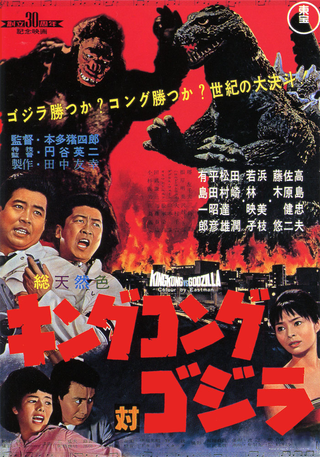
King Kong vs. Godzilla is a 1962 Japanese kaiju film directed by Ishirō Honda, with special effects by Eiji Tsuburaya. Produced and distributed by Toho Co., Ltd, it is the third film in both the Godzilla and King Kong franchises, as well as the first Toho-produced film featuring King Kong. It is also the first time that each character appeared on film in color and widescreen. The film stars Tadao Takashima, Kenji Sahara, Yū Fujiki, Ichirō Arishima, and Mie Hama, with Shoichi Hirose as King Kong and Haruo Nakajima as Godzilla. In the film, Godzilla is reawakened by an American submarine and a pharmaceutical company captures King Kong for promotional uses, culminating in a battle on Mount Fuji.
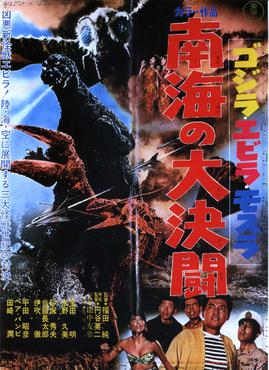
Ebirah, Horror of the Deep is a 1966 Japanese kaiju film directed by Jun Fukuda and produced and distributed by Toho Co., Ltd. The film stars Akira Takarada, Kumi Mizuno, Akihiko Hirata and Eisei Amamoto, and features the fictional monster characters Godzilla, Mothra, and Ebirah. It is the seventh film in the Godzilla franchise, and features special effects by Sadamasa Arikawa, under the supervision of Eiji Tsuburaya. In the film, Godzilla and Ebirah are portrayed by Haruo Nakajima and Hiroshi Sekita, respectively.

Son of Godzilla is a 1967 Japanese kaiju film directed by Jun Fukuda, with special effects by Sadamasa Arikawa, under the supervision of Eiji Tsuburaya. Produced and distributed by Toho Co., Ltd, it is the eighth film in the Godzilla franchise. It stars Tadao Takashima, Akira Kubo, Akihiko Hirata, and Beverly Maeda, with Hiroshi Sekita, Seiji Onaka, and Haruo Nakajima as Godzilla, and Marchan the Dwarf as Minilla.

Terror of Mechagodzilla is a 1975 Japanese kaiju film directed by Ishirō Honda, written by Yukiko Takayama, and produced by Tomoyuki Tanaka and Henry G. Saperstein, with special effects by Teruyoshi Nakano. Distributed by Toho and produced under their effects subsidiary Toho–Eizo, it is the 15th film in the Godzilla franchise, serving as a direct sequel to the 1974 film Godzilla vs. Mechagodzilla, the final film in the initial Showa Era of the franchise before Godzilla returned nine years later in The Return of Godzilla, directed by Ishirō Honda and scored by Akira Ifukube before their deaths.
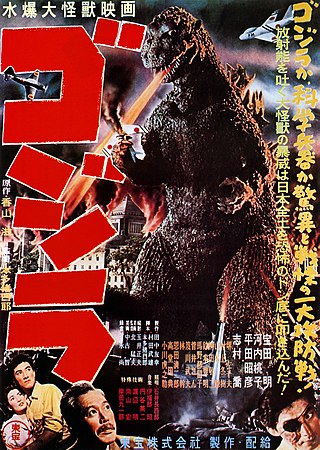
Godzilla is a 1954 Japanese epic kaiju film directed and co-written by Ishirō Honda, with special effects by Eiji Tsuburaya. Produced and distributed by Toho Co., Ltd., it is the first film in the Godzilla franchise. The film stars Akira Takarada, Momoko Kōchi, Akihiko Hirata, and Takashi Shimura, with Haruo Nakajima and Katsumi Tezuka as Godzilla. In the film, Japan's authorities deal with the sudden appearance of a giant monster, whose attacks trigger fears of nuclear holocaust in post-war Japan.

The Return of Godzilla is a 1984 Japanese kaiju film directed by Koji Hashimoto, with special effects by Teruyoshi Nakano. Distributed by Toho and produced under their subsidiary Toho Pictures, it is the 16th film in the Godzilla franchise, the last film produced in the Shōwa era, and the first film in the Heisei series. In Japan, the film was followed by Godzilla vs. Biollante in 1989.

Mothra is a fictional monster, or kaiju, that first appeared in the 1961 film Mothra, produced and distributed by Toho Studios. Mothra has appeared in several Toho tokusatsu films, most often as a recurring monster in the Godzilla franchise. She is typically portrayed as a colossal sentient larva (caterpillar) or imago, accompanied by two miniature fairies speaking on her behalf. Unlike other Toho monsters, Mothra is a largely heroic character, having been variously portrayed as a protector of her own island culture, the Earth and Japan. Mothra's design is influenced by silk worms, their imagos, and those of giant silk moths in the family Saturniidae. The character is often depicted hatching offspring when approaching death, a nod to the Saṃsāra doctrine of numerous Indian religions.
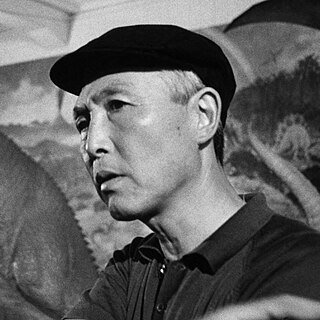
Ishirō Honda was a Japanese filmmaker who directed 46 feature films in a career spanning five decades. He is acknowledged as the most internationally successful Japanese filmmaker prior to Hayao Miyazaki and one of the founders of modern disaster film, with his films having a significant influence on the film industry. Despite directing many drama, war, documentary, and comedy films, Honda is best remembered for directing and co-creating the kaiju genre with special effects director Eiji Tsuburaya.

All Monsters Attack is a 1969 Japanese kaiju film directed by Ishirō Honda, written by Shinichi Sekizawa, and produced by Tomoyuki Tanaka. The film, which was produced and distributed by Toho Co., Ltd, is the tenth film in the Godzilla series, and features the fictional monster characters Godzilla, Minilla, and Gabara. The film stars Tomonori Yazaki, Kenji Sahara, and Hideyo Amamoto, with special effects by Honda and Teruyoshi Nakano, and features Haruo Nakajima as Godzilla, Marchan the Dwarf as Minilla, and Yasuhiko Kakuyuki as Gabara.

Invasion of Astro-Monster is a 1965 kaiju film directed by Ishirō Honda, with special effects by Eiji Tsuburaya. It is the sixth film in the Godzilla franchise and Shōwa period. The film was a Japanese-American co-production; it was the second collaboration between Toho Co., Ltd. and UPA. The film stars Akira Takarada, Nick Adams, Kumi Mizuno, Akira Kubo, and Yoshio Tsuchiya, with Haruo Nakajima as Godzilla, Masaki Shinohara as Rodan, and Shoichi Hirose as King Ghidorah. In the film, aliens plead with humanity to borrow Godzilla and Rodan to defeat King Ghidorah, only to betray the humans and unleash the monsters on the Earth.

Mothra vs. Godzilla is a 1964 Japanese kaiju film directed by Ishirō Honda, with special effects by Eiji Tsuburaya. Produced and distributed by Toho Co., Ltd., it is the fourth film in the Godzilla franchise. The film stars Akira Takarada, Yuriko Hoshi, Hiroshi Koizumi, Kenji Sahara, and Emi and Yumi Itō, with Haruo Nakajima and Katsumi Tezuka as Godzilla. In the film, humans beseech the aid of the insect god Mothra to stop Godzilla from destroying Japan.

Godzilla Raids Again is a 1955 Japanese kaiju film directed by Motoyoshi Oda, with special effects by Eiji Tsuburaya. Produced and distributed by Toho Co., Ltd., it is the second film in the Godzilla franchise. The film stars Hiroshi Koizumi, Setsuko Wakayama, Minoru Chiaki, and Takashi Shimura, with Haruo Nakajima as Godzilla and Katsumi Tezuka as Anguirus. In the film, Japan struggles to survive Godzilla's return, as well as its destructive battle against its ancient foe Anguirus.
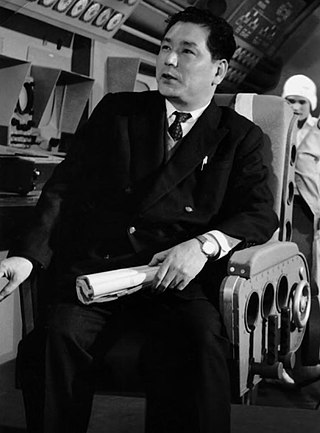
Tomoyuki "Yūkō" Tanaka was a Japanese film producer. Widely regarded as the creator of the Godzilla franchise, he produced most of the installments in the series, beginning in 1954 with Godzilla and ending in 1995 with Godzilla vs. Destoroyah. He was one of the most prolific Japanese producers of all time, having worked on more than 200 films, including over 80 tokusatsu films.
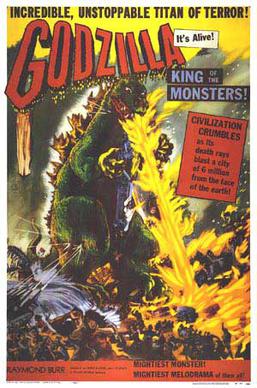
Godzilla, King of the Monsters! is a 1956 kaiju film directed by Terry O. Morse and Ishirō Honda, with special effects by Eiji Tsuburaya. It is a heavily re-edited American localization, or "Americanization", of the 1954 Japanese film Godzilla. The film was a Japanese-American co-production, with the original footage produced by Toho Co., Ltd., and the new footage produced by Jewell Enterprises. The film stars Raymond Burr, Takashi Shimura, Momoko Kōchi, Akira Takarada, and Akihiko Hirata, with Haruo Nakajima and Katsumi Tezuka as Godzilla. In the film, an American reporter covers a giant reptilian monster's attack on Japan.

Varan the Unbelievable is a 1958 Japanese kaiju film directed by Ishirō Honda, with special effects by Eiji Tsuburaya. Produced and distributed by Toho Co., Ltd, it stars Kōzō Nomura, Ayumi Sonoda, and Koreya Senda, with Haruo Nakajima as Varan. In the film, a reporter's investigation into two mysterious deaths in Japan's mountains leads to the discovery of a giant lake monster, wrecking its way towards civilization.

Godzilla is a Japanese monster, or kaiju, media franchise consisting of films, television series, novels, comic books, video games, and other merchandise. The franchise is centered on the fictional kaiju Godzilla, a prehistoric reptilian monster awakened and powered by nuclear radiation. The franchise is recognized by the Guinness World Records as the "longest continuously running film franchise", having been in ongoing production since 1954, with several hiatuses of varying lengths. The film franchise consists of 38 films: 33 Japanese films produced and distributed by Toho Co., Ltd.; and five American films, the first of which was produced by TriStar Pictures and the remaining four by Legendary Pictures, with the latest being released in March 2024.

A monster movie, monster film, creature feature or giant monster film is a film that focuses on one or more characters struggling to survive attacks by one or more antagonistic monsters, often abnormally large ones. The film may also fall under the horror, comedy, fantasy, or science fiction genres. Monster movies originated with adaptations of horror folklore and literature.
Daryn Okada, A.S.C. is a cinematographer and the former president of the American Society of Cinematographers. In 2015, Okada joined the board of governors of the Academy of Motion Picture Arts and Sciences. A highly prolific director of photography, Okada has worked on numerous well-known films including Halloween H20: 20 Years Later, Lake Placid, Mean Girls, and American Reunion, many of which are directed by Steve Miner.
Godzilla: King of the Monsters in 3D was an unproduced American film project that was developed in 1983 by Steve Miner, with Miner attached to direct the film. Miner shopped the project around Hollywood and generated some interest, but was unable to secure funding and let the rights revert to Toho. The project was the first attempt to produce a Godzilla film at an American film studio.
References
- 1 2 "Steve Miner". Movies & TV Dept. The New York Times . 2015. Archived from the original on 2015-04-23.
- ↑ Miner, Steve 1951- (Stephen Miner) | Encyclopedia.com
- 1 2 Ryfle 1998, p. 218.
- ↑ Ryfle 1998, p. 217.
- ↑ Ryfle 1998, p. 223.
Bibliography
- Ryfle, Steve (1998). Japan's Favorite Mon-Star: The Unauthorized Biography of the Big G . ECW Press. ISBN 1550223488.